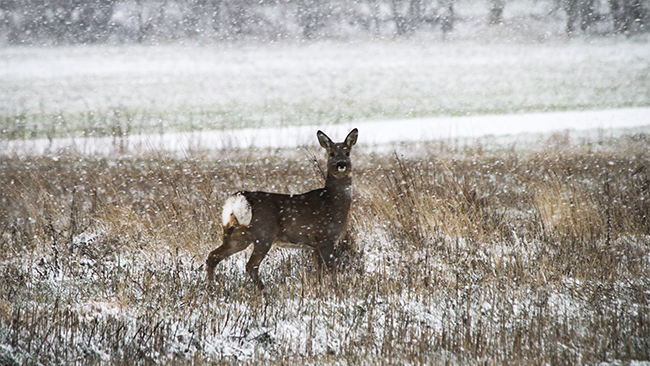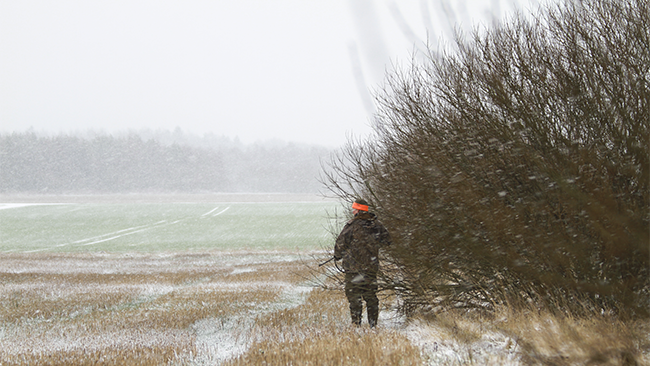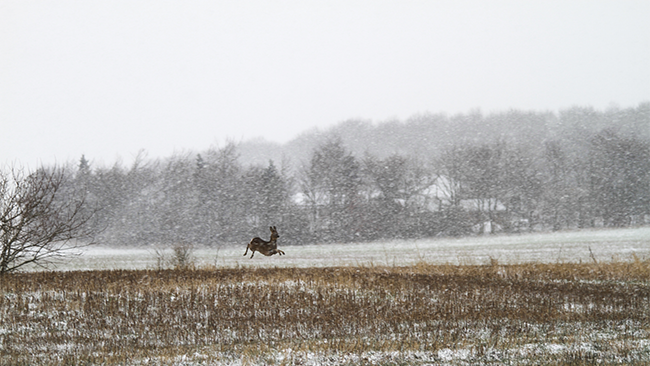Article written by Ville Pohjola, freelance writer and hunting enthusiast. Read the first part of the article here.
How does terminal ballistics work?
As mentioned in the first part of this article, terminal ballistics is basically what the bullet does upon impact. Lethality suffers if all aspects involved in the equation aren’t applied properly. One of the most important elements in terminal ballistics is shot placement. What other elements are there?
The challenge (and also a reason for many myths surrounding terminal ballistics) is that we cannot predict the behavior of an expanding bullet with 100 % certainty. It depends on many parameters like the animal’s muscle and bone structure, its’ body size, as well as bullet speed, structure, angle and so on. In this chapter, I will list some basic facts about terminal ballistics.
First, it is not wise to increase the caliber unnecessary. Excessively hard-kicking firearms can easily induce flinching caused by recoil. Shot placement suffers. The first element in terminal ballistic is that the hunter is able to deliver the bullet to vital organs like lungs, liver, heart. The central nervous system is an effective kill shot too, but harder to hit because the target is so small. It is also not wise to shoot through big bones because it can make the bullet behave unpredictably and cause a lot of meat damage. In the worst case scenario, the bullet might not reach vital organs at all.

Stress causes tissue damage. The most unpredictable element is how the tissue behaves when the bullet impacts the animal. Tissue is elastic and living, containing a variable amount of liquid, fascia, sinew and muscle. Due to this complexity, the resistance varies every time a bullet hits it, even if being shot with the same bullet. And resistance is what makes the hunting bullet expand. So if the bullet is not well-designed and of high quality, then what should be expansion becomes fragmentation, and the penetration suffers. A cartridge’s power, bullet mass, speed, diameter or the case volume help only if the bullet is placed precisely in the vital organs.
But what does that mean? A good example to consider is the heart shot, often perceived as an instantly deadly shot. However, rupturing the heart does not necessarily ensure a fast kill. It is actually cerebral hemorrhage which makes the heart shot effective. A heart shot kills immediately only if the heart is just at the moment of bullet impact pumping blood out to the veins. The suddenly increasing blood pressure causes small hemorrhages all over the brain and that kills the animal immediately.

There are different kinds of tissue. An animal is not a homogenous pile of tissue. Every animal has muscle, bones and organs in a certain combination. The hunter needs to understand how different types of tissue affect bullet penetration and expansion. More important is to understand that the resistance of tissue changes when you change one parameter in the ammunition you use. For example, raising the velocity of the bullet sometimes reduces penetration, as the bullet may expand too rapidly.
Wait . . . what? Well, it’s logical and not at all hard to understand. If you hit the surface of water fast with your open palm, what happens? It probably hurts and your hand does not penetrate easily into the water. This happens because the resistance of the water increases due to the impact speed. But what happens if you slowly stick one finger in the water? It penetrates easily, without resistance. It doesn’t make a big splash or remove lots of water, so the stress towards the water is small.
Keep in mind that 50-70 % of tissue consists of water, and compare it to the above example. It gives an understanding of what the hunting bullet’s work consists of and how all the parameters need to be in balance. Sectional density, velocity, bullet weight, construction etc. all come into play.
The permanent wound cavity is not the whole truth. We’ve all studied the bullet wound when skinning the game, typically measuring the entrance and exit wound because it is difficult to measure the wound cavity from fractured organs. However, don’t put all your faith in the entry and exit holes alone. The bullet generates both a permanent and a temporary wound cavity, and in some instances, the temporary cavity might be the more important one. Tissue damage can be caused by bullet deformation. Different bullets expand in different ways. Generally speaking, the bullet which expands well and leaves a small pit in the nose of the bullet causes the best temporary wound cavity.
An ethical kill requires a proper wound cavity. The variations in game size matter. The diameter of the torso, the bone and muscle structure, and the penetration and expansion behavior of the bullet need to match. Too much penetration is not good for a deer, but for bear, insufficient penetration may not even allow the bullet to reach the vital organs.
All bullet characteristics matter. A phenomenon which is typically forgotten is the effect of bullet expansion compared to penetration. Penetration is often ‘guesstimated’ based on sectional density. As said, the bullet expansion can’t be exactly forecasted because of the variation in tissue and shot placement. So, how can the penetration of an expanding bullet be precisely estimated? Well, only by shooting it into ballistic gelatin.
Most of us have read about the exterior ballistics of the bullet and know that the bullet shape and weight affects its flight. A well-designed, accurate bullet needs to have a certain length and adequate weight compared to the diameter, also considering the weight limits in certain calibers.
The same kinds of variables also affect terminal ballistics. A short, large caliber bullet might not penetrate well enough because there is not enough weight in relation to the bullet diameter. Such a bullet is said to have poor Sectional Density (SD). A smaller, but heavy-to-diameter bullet has better lethality. For instance, in Sweden a lot of the moose hunters use the 6.5×55 Swedish Mauser, as the bullet’s SD is better than that of the light-to-diameter .45 bullet, and therefore penetrates far better. This is also a reason for why most of the 6.5mm and 7mm calibers can be a better option than .30 calibers.

Controlled expansion is not a good thing in all cases. One of the most typical big mistakes hunters make is shooting smaller game with ‘controlled expansion’ bullets for big game. Shooting mid-sized game with a bullet designed for big game, it may penetrate too deeply before it starts to expand. This type of bullet is designed to shoot through big game animals, breaking heavy bone if needed. The big game bullet might be too hard for smaller game, failing to expand at all. This may mean a smaller wound channel, and a failure to kill the animal quickly and in a humane manner. Big exit wound might be a sign about too much penetration, especially if the animal has travelled over 100 meters away after being shot. The bullet has to match the game, always, for every type of hunting.
Writer’s Tip: As the jacket of the big game bullet is designed to penetrate hard muscle and thick bones, people typically aim for the shoulder of the animal. I prefer softer bullets and place the shot either in the armpit, just behind the front leg’s backline, or in the high shoulder. Rib is not as thick as leg bones, so with that placement there are no thick bones affecting the work of a bullet. It can penetrate, expand and create a wound cavity to vital organs without any interference. That way I get all out of the bullet’s diameter, weight, speed and expansion. NOTE: Never attempt a shot that is out of your shooting skills’ range!
The third and final part of this text will be published in later January.
Photo copyright: Nammo Lapua Oy

